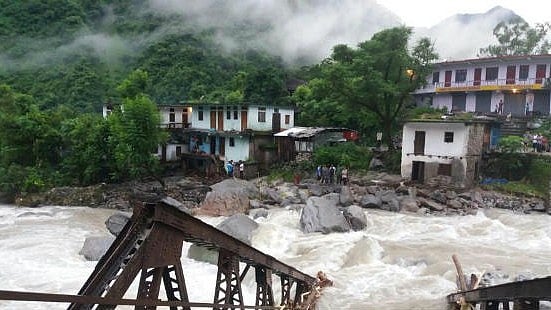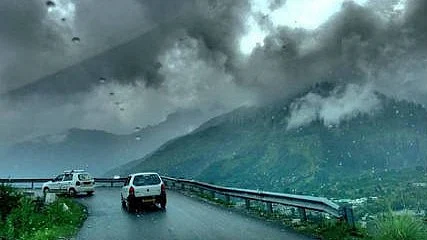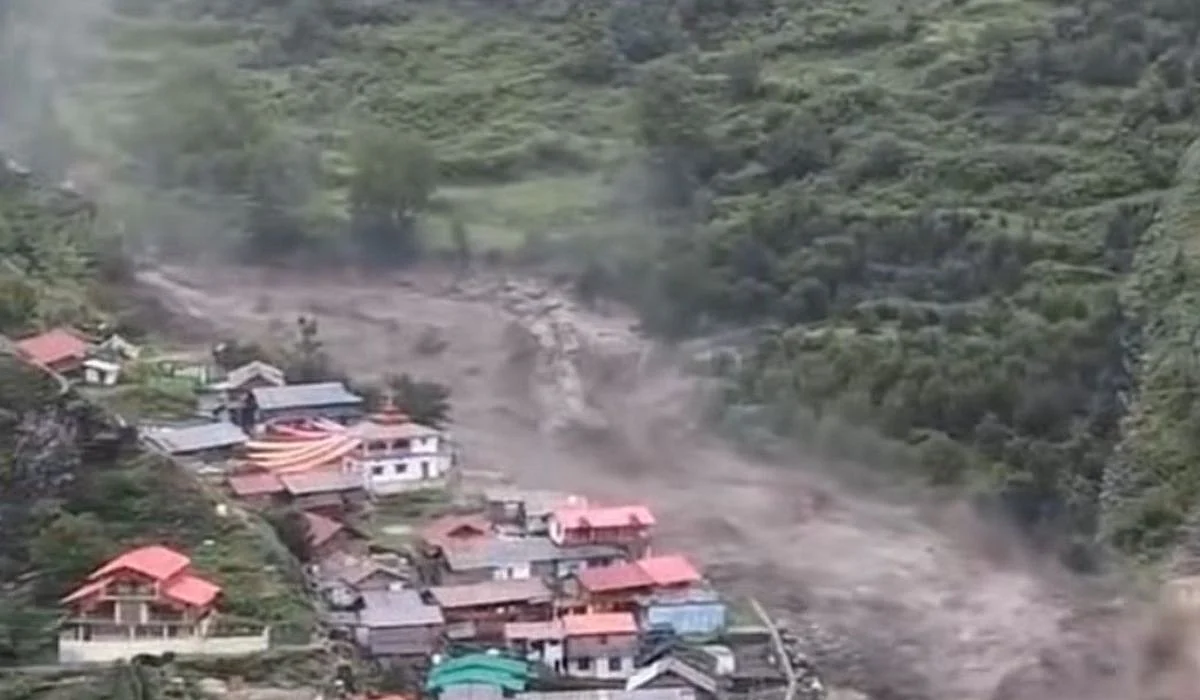Dehradun: The city has been experiencing extremely heavy rainfall in the numerous regions of Uttarakhand as the weather has changed from the mountains to the plains. The India Meteorological Department (IMD) has issued a red alert due to the worsening weather and torrential rainfall in Uttarakhand, which is triggering landslides, mudslides, and flood-like situations.
Numerous vehicles were washed away, and torrential rains have pushed the water levels and caused flooding. The IMD said that extremely heavy rainfall is predicted in various regions of Uttarakhand, and it will be accompanied by gusty winds, thunderstorms, and lightning. Tourists and residents are advised to be cautious and avoid unnecessary travel.
Red alert has been issued in these regions
The torrential rainfall in the state is not disrupting people's lives, but it is causing more chaos. The state government has declared holidays in schools. According to the IMD, rainfall is likely to continue till August 10, 2025. The weather department has issued a red alert in Nainital, Champawat, Uttarkashi, Udham Singh Nagar, Bageshwar, Tehri, Haridwar, and Pithorgarh. Heavy rainfall is predicted in Narendra Nagar, Kotdwar, and Dehradun. The weather department has issued an orange alert in these regions.
IMD issued an advisory
The weather department has issued an advisory for the rainfall. The weather department has advised residents to take caution, avoid unnecessary travelling, and travel only if required. Follow any traffic advisories, avoid going near water bodies, and keep yourself in a safer place. move livestock to a safer place, keep yourself updated with the weather-related information, and follow advisories issued by the state government.
What is the reason for the heavy rainfall?
Uttarakhand is experiencing heavy rainfall due to a combination of factors, including a depression in India, a monsoon trough, and a recent western disturbance. According to the weather department, these systems bring moisture and uplift, leading to widespread rain, including hailstorms in some areas. Climate change is another factor that is contributing to the intensity and frequency of these events.










